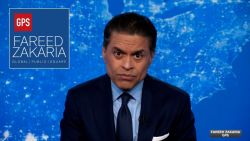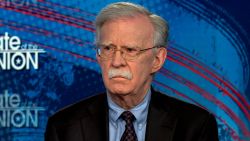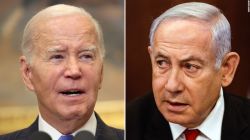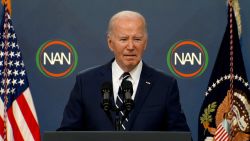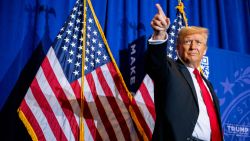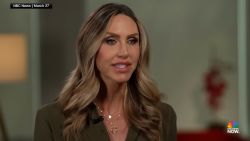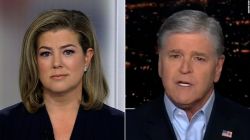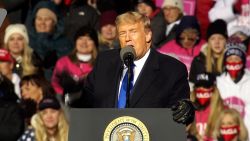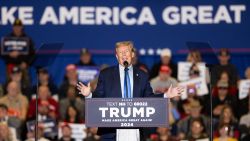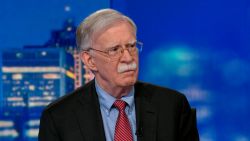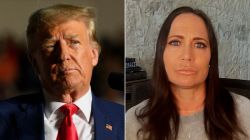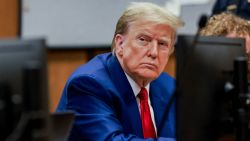President Donald Trump’s trip to Florida on Friday would seem like any other presidential visit to a swing state a few months before an election if the United States was not in the middle of a pandemic and the Sunshine State not its latest hotspot.
The trip, which includes a multimillion-dollar fundraiser and meetings, comes amid Trump’s larger push to get the US back into gear amid the pandemic. The President has been determined to project an image of normalcy, even as he heads into what’s been widely referred to as the new epicenter of the virus and the rest of the America is being discouraged from traveling, told to socially distance and encouraged to wear a mask.
The President’s first stop on Friday was a visit Doral, Florida, to take part in a meeting with US Southern Command. The meeting, focused largely on drug trafficking prevention efforts, took place in Miami-Dade County, which has seen a dramatic rise in coronavirus cases this week and continues to be pressed for resources.
A presidential visit – no matter who is in office – requires a significant amount of resources, with White House officials, White House Medical Unit representatives and US Secret Service agents traveling in advance of the president to coordinate with local officials on the ground. There is an extensive amount of medical preparation involved each time a president travels, with plans in place for the worst-case scenario.
After visiting Southern Command, the President participated in a roundtable with dissidents of communism and socialism in Latin America. Participants largely focused on warning against socialism and communism creeping into the United States, at times drawing parallels to Democrats and activists in the United States.
“Now Joe Biden and the radical left are trying to impose this same system, socialism plus in America. Biden is a puppet of Bernie Sanders, (Alexandria Ocasio-Cortez), the militant left, the people who want to rip down statues and monuments to George Washington, Thomas Jefferson, Benjamin Franklin,” Trump said, adding: “They want to rip down statues to Jesus.”
Like other White House events in recent weeks, this roundtable took place at a church, and it’s not clear if audience members were socially distanced. During similar events at churches held by the White House amid the pandemic, efforts to socially distance audience members had been mixed.
The President will round off his trip by participating in closed-door fundraiser – one of many events Trump and past presidents have used to secure support from high-dollar donors. The event is expected to raise $10 million. But it comes after supporters slated to attend a fundraiser with the vice president just on Thursday tested positive for the coronavirus and were asked to leave before he arrived.
Trump’s public appearances within the White House this week also appeared to be part of efforts to return to normal amid the pandemic, focusing on returning children back to school amidst the pandemic, signing a major trade deal, and enhancing “Hispanic prosperity.”
While meeting with the President of Mexico to sign the US-Mexico-Canada Trade Agreement, Trump touted the US’ decision to send ventilators to Mexico for “saving a lot of lives.” But he made no mention of the fact that this week, Mexican coronavirus cases and deaths have nearly tripled after the government reopened certain sectors of the economy.
During events at the White House to push getting children back to school this fall, Trump said he would pressure governors to reopen academic institutions, claiming they want to keep them closed for political reasons, not over concerns about spreading the virus.
And during a roundtable and Rose Garden ceremony to establish the “Hispanic Prosperity Initiative” on Thursday, mentions of the coronavirus’ impact on Latinos were infrequent. One roundtable participant called the coronavirus’ impact on the economy a “blip.”
During an executive order signing, Trump touted his administration’s efforts on the coronavirus, but never mentioned its health impacts on the Hispanic community.
Recent data from the US Centers for Disease Control and Prevention show that Hispanics and Blacks are suffering from coronavirus infections at rates far beyond their share of the population. And CDC data obtained by The New York Times show that Blacks and Latinos are three times as likely to become infected with the virus as their white neighbors.
At the White House events focused on Hispanics on Thursday, there was also no mention of the recent surge of coronavirus cases and deaths in states across the sunbelt, which have some of the largest Latino populations in the country.
In Texas, statewide Hispanic coronavirus cases are proportionate to their population. But in individual cities, such as Dallas, Texas, the Hispanic community is seeing a disproportionate impact.
In Dallas, more than 60% of individuals with coronavirus are Hispanic, according to Dallas County health officials. Hispanics make up about 40% of Dallas County, per the Census Bureau. And in the Rio Grande Valley, a region with a large Hispanic population, hospitals and mortuary services have started to become overwhelmed due to a coronavirus surge.
However, there are some signs that the President, the White House and his campaign are trying to adjust to the new realities of coronavirus.
Trump, who has been reluctant to wear a mask in setting where social distancing is not possible, said he plans to wear a mask while visiting Walter Reed National Medical Center on Saturday.
“You’re in a hospital setting, I think it’s a very appropriate thing,” the President said on Thursday. “I have no problem with a mask.”
Trump explained that “if I’m with soldiers, people that – you know, I don’t want to spread anything.”
And the campaign is planning to make changes to its upcoming rally in New Hampshire, his second since the pandemic began.
The rally was scheduled to take place this weekend, but White House press secretary Kayleigh McEnany said Friday that it had been pushed back because of an incoming storm.
Tulsa, where the first campaign event took place in June, is now seeing a rise in coronavirus cases. Local health officials have suggested the rise was tied to a series of large events in the city, including the rally.
Unlike the first rally in Oklahoma, which fell below attendance expectations and was held indoors with little social distancing, the New Hampshire event is expected to be held in an airplane hangar. And while the campaign said in Tulsa that masks were voluntary, this time the campaign plans to ask rally goers to wear masks and encourage social distancing.
CNN’s Ashley Killough, Fredreka Schouten and Betsy Klein contributed to this report.



